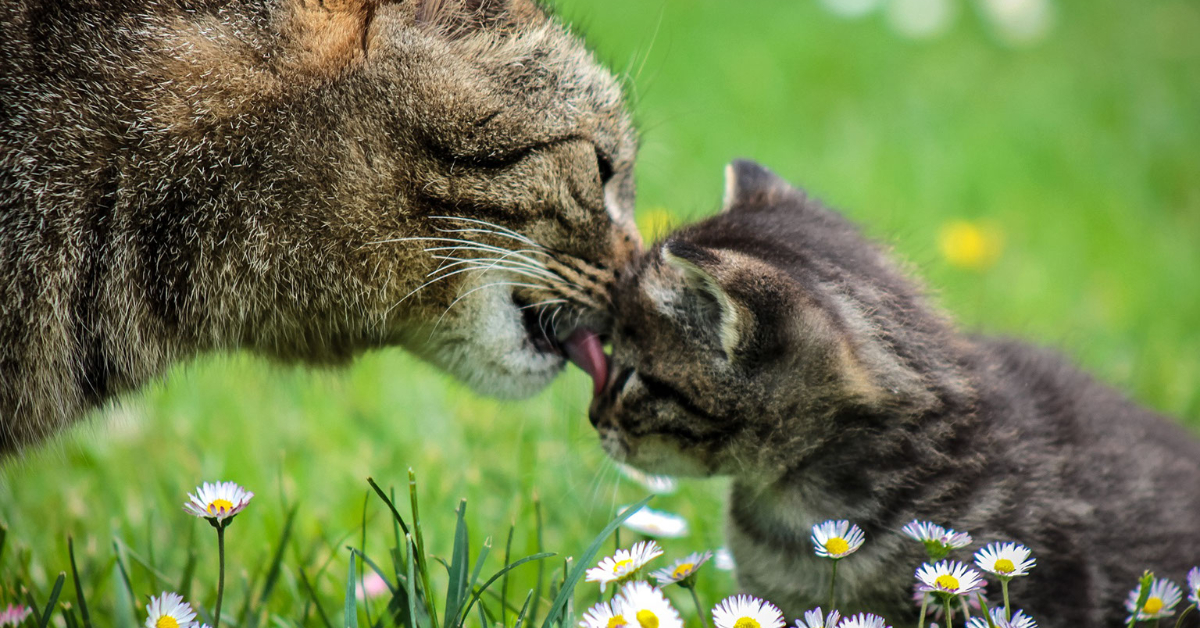Domestic cats are one of the most popular pets in the world, and for good reason. These adorable and affectionate animals are fascinating creatures with unique personalities and quirks. In this article, we will explore some interesting facts about domestic cats that you may not have known.
Here we take a look at 20 fascinating facts about Cats.
20 Facts About Cats
1) A house cat’s genome is 95.6 percent tiger, and they share many of the same behaviors and traits with their much larger jungle ancestor. These behaviors include scent marking by scratching, prey play, prey stalking, pouncing, chinning, and urine marking.
2) Cats can rotate their ears 180 degrees. As a hunter, this helps detect and hear potential prey. As an animal that may be prey, this makes it more difficult to sneak up on a cat and helps them detect predators.
3) The hearing of the average cat is at least five times keener than that of a human adult. Their ears are sensitive to high pitch sounds which is why most cats detest vacuum cleaners and blenders. This excellent sense of hearing allows them to detect even the slightest sounds. They can hear frequencies that are too high for humans to detect, and they can even hear the sound of a mouse rustling in the grass from several yards away.
4) Cats are believed to be the only mammals who don’t taste sweetness.
5) Cats are highly athletic and can jump up to six times their length.
6) A Cats’ claws all curve downward, which means that most domestic cats can’t climb down trees head-first. Instead, they have to back down the trunk. The Norwegian Forest Cat is the exception to this rule as their sturdy claws allow them to move down a tree head first.
9) A cat’s grooming process stimulates blood flow to his skin, regulates their body temperature and helps them to relax.
11) A cat cannot see directly under its nose. They do have a a wider field of view (about 200 degrees, compared with humans’ 180 degree view). This provides a greater range of peripheral vision (all the better to spot that mouse (or toy) wriggling in the corner).
14) Cat Whiskers serve and important purpose. Cats use their whiskers to “feel” the world around them in an effort to determine which small spaces they can fit into. A cat’s whiskers are generally about the same width as its body. This is why you should never cut or trim their whiskers.
15) A Cats’ purring is considered a self-soothing behavior. Cats purr when they are ill, distressed, and when they’re happy.
Lets us know in the comments if you have any other fascinating facts about Cats that should be shared.
16) Cats have a highly flexible spine, which allows them to contort their bodies in unusual ways. This flexibility is due to the presence of many small bones in their spine, which are held together by a network of muscles and ligaments. This allows them to jump and climb with ease and also helps them to fit into tight spaces.
17) Cats are natural-born hunters, and their keen senses and agility make them excellent predators. Domestic cats still retain many of the instincts and skills of their wild ancestors, and they often enjoy hunting small prey such as birds, rodents, and insect
18) Cats have a unique way of drinking that sets them apart from other animals. Rather than using their tongues to lap up water, they use a process called “lapping.” This involves them dipping their tongue into the water and then pulling it back quickly, creating a column of water that they can then catch with their mouths.
19) Like humans, each cat has a unique personality, which is shaped by a combination of genetics and environment. Some cats are outgoing and affectionate, while others are shy and independent. Understanding your cat’s personality can help you develop a deeper bond with them.
20) Studies have shown that owning a cat can have many health benefits, including lower blood pressure, reduced stress levels, and a lower risk of heart attack and stroke. Cats also provide emotional support and companionship, which can be especially beneficial for people who live alone.
Remember to “share” these facts about Cats with other Cat fans and “subscribe” to our CatFancast Channel on YouTube.
